If you’ve already seen the Madrid highlights like The Prado Museum, the Plaza Mayor and the Palacio Real (Royal Palace), dive into 2 days in Madrid-off-the-beaten-track for an authentic Madrid experience.
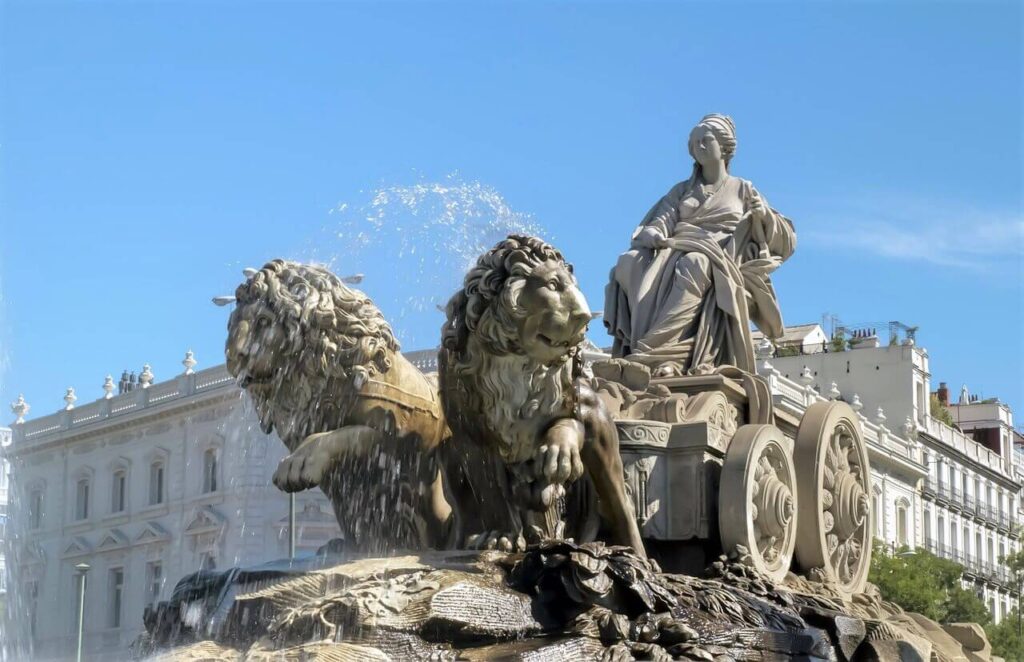
Similar to other great Spanish cities like Barcelona and Valencia, Madrid is much more than world-class museums, soaring architecture and mouthwatering cuisine.
There is another Madrid that is more subdued, hidden down ancient winding streets yet equally fascinating.
Table of Contents
ToggleHow to use this guide to maximize your 2 days in Madrid
To maximize your 2 days in Madrid, first think about what activity appeals to you the most. For example, are you a foodie, museum lover, like to explore interesting neighborhoods?
Next pick favorite activities mentioned here. See where they are located on the map and try to congregate activities based on their location relative to each other.
For example, on one of your 2 days in Madrid you might want to visit the National Museum of Archeology in the morning, then have lunch in a nearby food market. Stroll through Parque El Retiro in the afternoon then have dinner in one of the busy “restaurant rows.”
To achieve that, stay in the El Retiro neighborhood. Go to the Archeology Museum, lunch in La Paz Market, enjoy a walk in El Retiro Park and dine on Ibiza street.
All these activities are within walking distance in the same area saving you transportation time.
On the 2nd of your 2 days in Madrid, do the same thing but selecting places you missed on the first day.
A brief (very brief) history of Madrid
The area of Madrid in central Spain has been inhabited since prehistoric times. The Romans were in the area in the 2nd century CE but the town does not appear to have been a major outpost.
There is evidence of a Visigoth village in Madrid dating from the 7th century.
Madrid first appears in the historical record when the Moors began constructing a fortress in 865 CE in the town they called “Mayrit” meaning plenty of water.
The Christians took back the city from the Muslims in 1083 CE. The story is that Christian King Alfonso VI was laying siege to the city when a soldier climbed the 12 meter (39 feet) wall and replaced the Moorish flag with a Christian one thus inspiring the soldiers who went on to take the city.
As the King watched the soldier climb the wall with only a dagger he said “He looks like a cat.” Since that day people from Madrid have been called “gatos” (cats). But to be a true cat, a person has to have had three generations born in Madrid.
Throughout the Middle Ages, Madrid grew but not as quickly as other important coastal towns like Barcelona, Valencia and other cities on the Mediterranean coast.
Prior to the 16th century much of European nobility had itinerant courts traveling around their kingdoms year-round to see and be seen by their subjects, and thus maintain control.
In 1561 King Philip II established his court somewhat permanently in Madrid even though he did not refer to the city as the “capital.”
Historians speculate as to why the King established his court in Madrid vs other more important cities of the day like Valladolid or Toledo.
Most agree the King found that neither the church nor the nobility had an important presence in Madrid. This appealed to Philip because that facilitated the creation of an administration solely under royal (his) supervision.
Madrid also had a good water supply, was not as susceptible to disease as were other, mainly coastal cities, and was more easily defensible.
The Madrileños (people born in Madrid) clinched the deal by offering a princely sum to Philip to facilitate the transfer of the court to Madrid.
Best Madrid neighborhoods to visit on your 2-days in Madrid
Sol
Even though the Puerta del Sol (Sun’s Door), “Sol” for short is the center of Madrid, both figuratively and literally and therefore very much an ON-the beaten track destination, you can’t NOT mention it.
As the center of Madrid, all roads in Spain start in Sol. In the center of the plaza, you see a sign stating “kilometer 0.” The streets that extend from Sol, like spikes on a wheel, are full of restaurants, flamenco (a traditional Spanish dance that Spain is famous for) clubs, and unique shops.
Near the center of Sol’s square, at the entrance of one of the most interesting streets is a statue of the symbol of Madrid, a bear eating from a berry tree.
The statue symbolizes the resolution of a land dispute between the church and city council in 1222. The symbol forms part of Madrid’s coat of arms and can be seen everywhere.
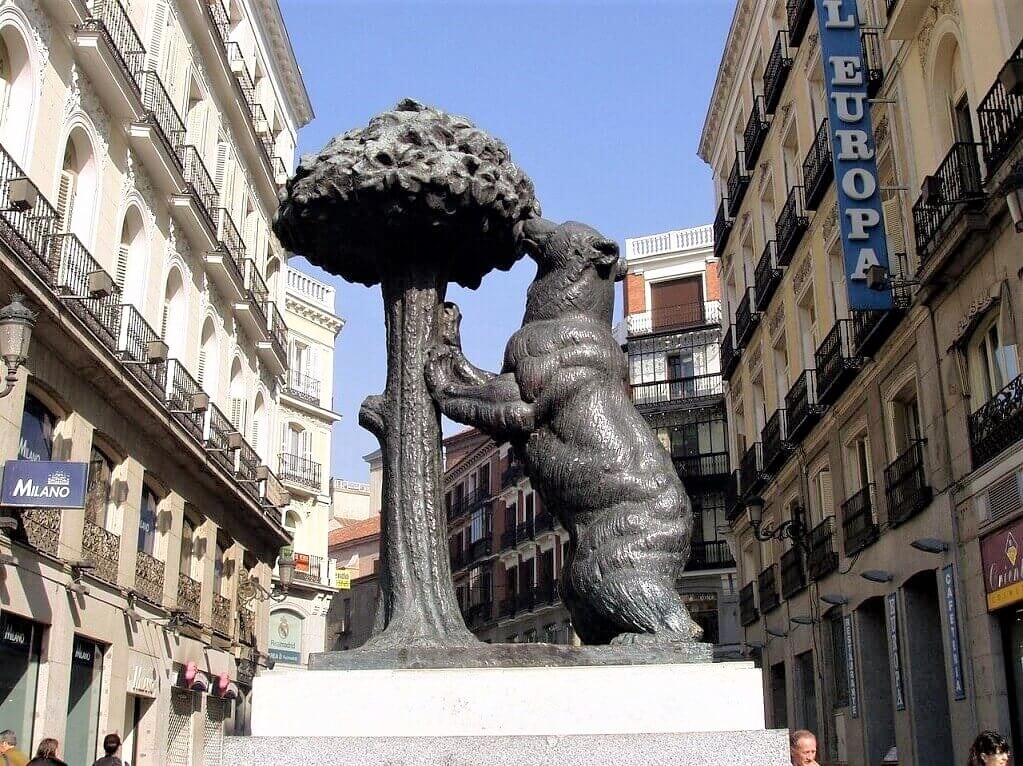
Similar to Times Square in New York City, Sol is a major metro stop. You’re certain to stop there to change trains at some point during your 2-days in Madrid if you use public transportation.
Despite being such a busy destination, the neighborhood offers many delightful off-the-beaten-track experiences like the boutique museums, Palacio de Gaviria and the Monasterio de Las Descalzas Reales.
There are many glorious book stores in the neighborhood from tiny independent stores to larger establishments, many with English language sections.
It’s always interesting to stroll Madrid’s main square, Plaza Mayor, and learn about its history.
Completed in 1619 and reconstructed in 1854, this plaza has witnessed many key public events like bull fights, crowning ceremonies, Spanish Inquisition trials and executions.
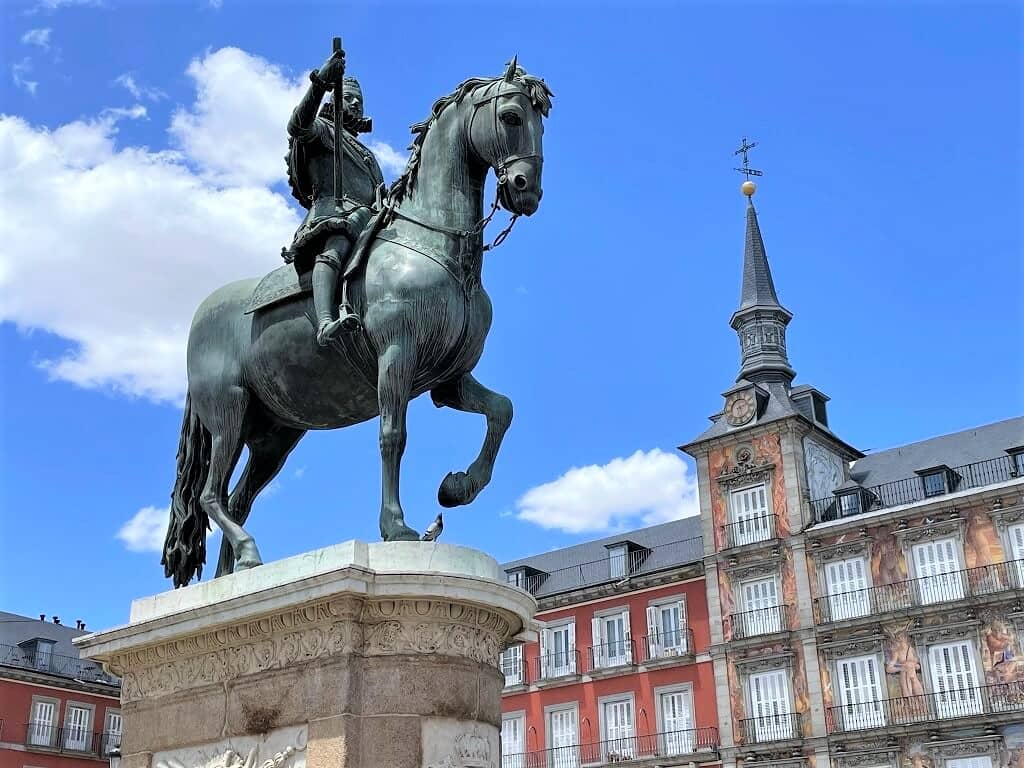
Spots worth visiting in the Sol neighborhood include Sobrino del Botin, a Hemingway favorite and the oldest continuously operating restaurant in the world according to the Guinness Book of Records.
Another is the Mercado San Miguel. Stop by these iconic eateries for at least a snack.
Other than the two eateries mentioned above, stay clear of restaurants in Sol as many are tourist traps. The cardinal rule of where to eat applies here; “eat at least 5 blocks from a busy tourist attraction.”
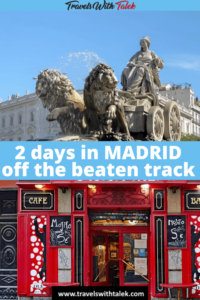
Chueca
Be sure to explore the less touristy, quirky neighborhoods like Chueca, unofficially referred to by the English speaking community as the local “gayborhood.”
The Chueca neighborhood was once a seedy part of town. Over time it transformed itself into the center of Madrid’s gay community. Today it is a vibrant section of town with tapas bars, shopping boutiques and a lively club scene.

Take time to visit one (or more) of Chueca’s trendy jazz clubs and music venues with comical names like, “Quien la invito?” (who invited her?), “Por dios sacame” (Good god, get me out) and “Intruso” (Intruder). Some of these cater to the gay community.
If you have time, treat yourself to a meal at the Cocina de San Anton. This is a multistory complex full of interesting shops, several restaurants including a rooftop one with great views and a food market.
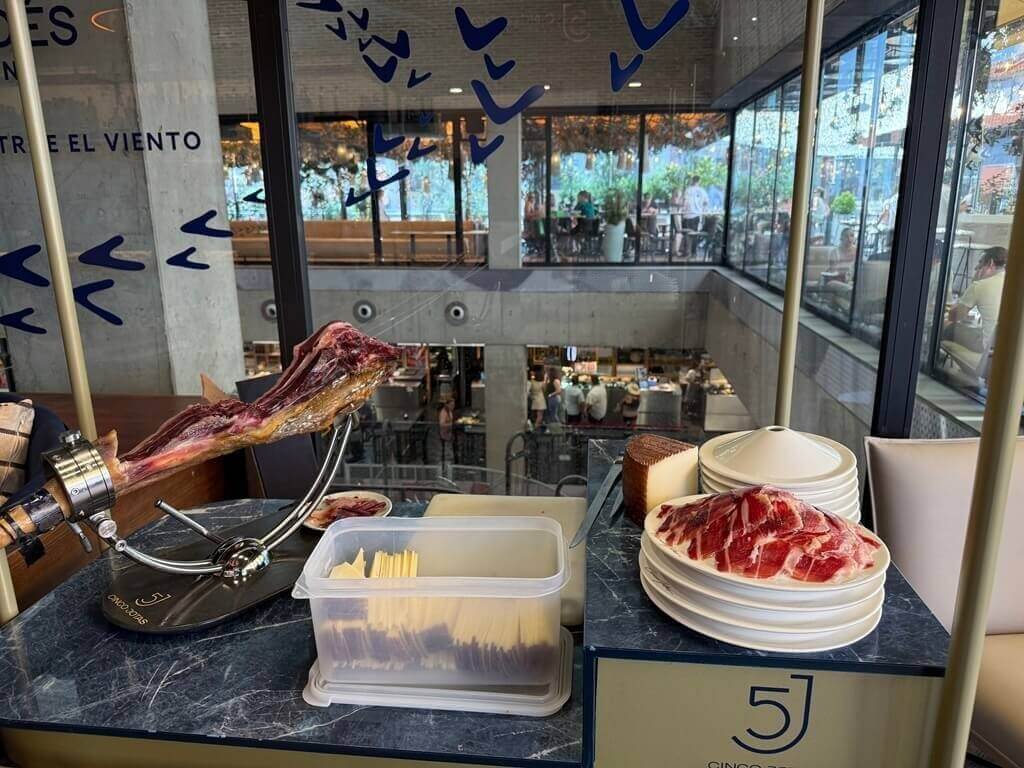
Salamanca
Decidedly upscale and and oh-so-sophisticated, the Salamanca neighborhood is all about international brand-name stores, broad luxurious avenues, trendy boutiques and fabulous restaurants and food markets.
Here is where you’ll find the Golden Mile, an exclusive shopping area.
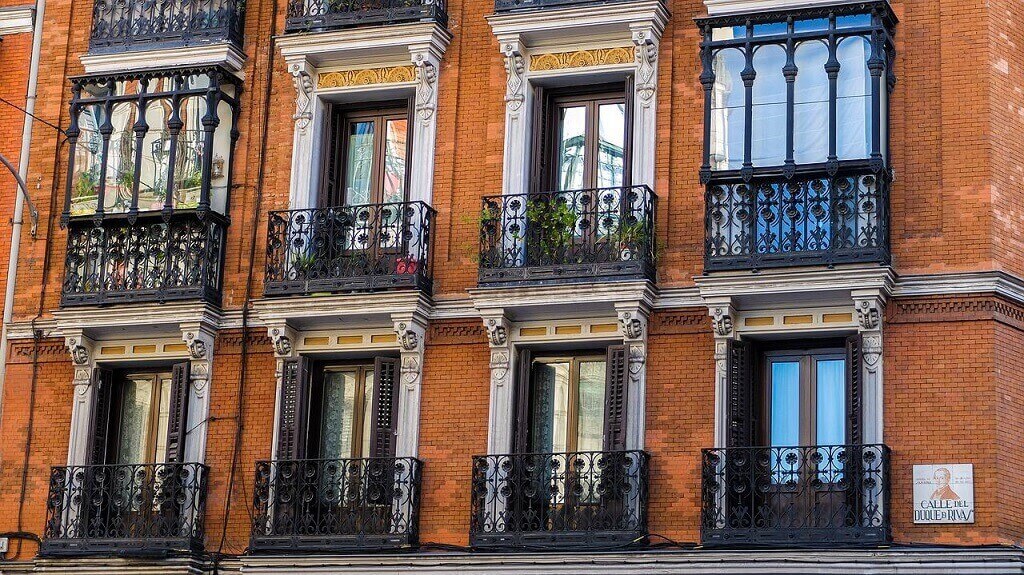
Stroll Serrano Street with its beautiful architecture and stop at Mercado de La Paz, a less hectic market with hi-end products.
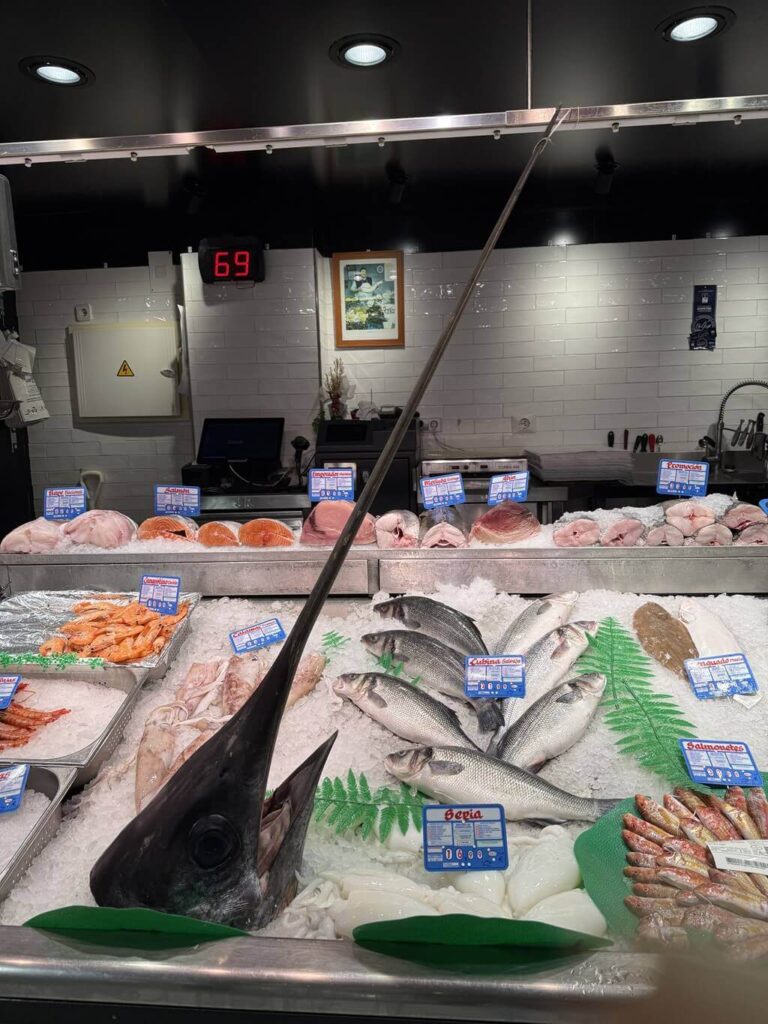
Seafood selection at Mercado La Paz
One of the coolest jazz clubs in Madrid (and there are many) is the Recoletos Jazz Bar in the Salamanca neighborhood. This beautifully appointed club has a great selection of artists playing everything from Blues to New Orleans jazz.
They offer dining and varied cocktails. Get your tickets online in advance as they often sell out.
La Latina
If you love food and food adventures, head to La Latina’s Cava Baja Street for a real treat. This street is lined with tapas bars of every imaginable type. Eat your way up and down the street then find one of the neighborhood’s little plazas.
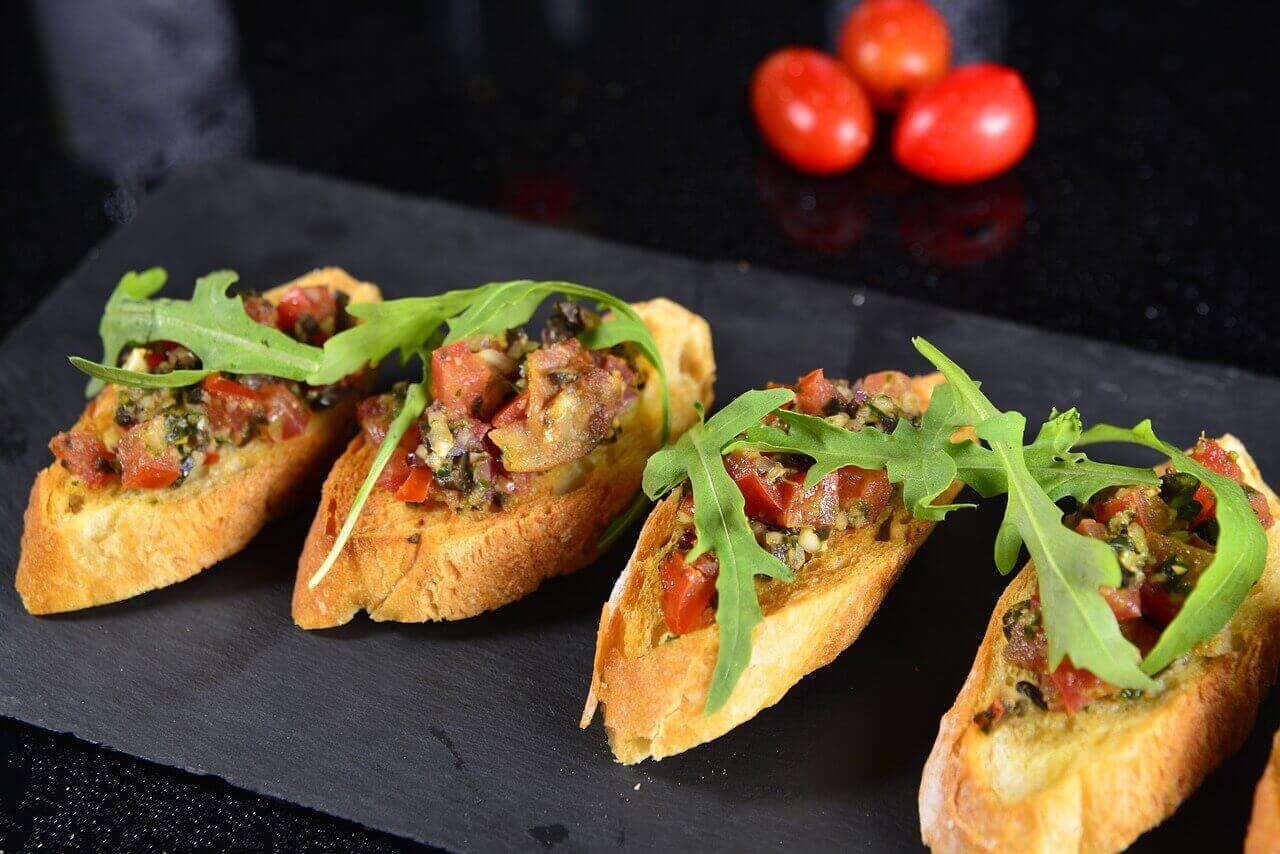
Grab a caña (a small beer) or a glass of wine, which you can nurse for hours, while you people-watch and enjoy the sun.
Lavapies
Lavapies, translates into “foot-washer.” I’d love to know the origin of that name. Some say it’s because a river where people washed ran through the area. Others say this is where some folks washed their feet. Perhaps a religious practice?
One of the best things about Madrid is it multiethnicity with immigrants from all over the world.
Much like New York with its variety of ethnic restaurants, Lavapies has an eclectic collection of multicultural restaurants from Mexican to Malaysian, Ukrainian to South Indian just in case you’re in the mood to try something other than traditional Spanish fare.
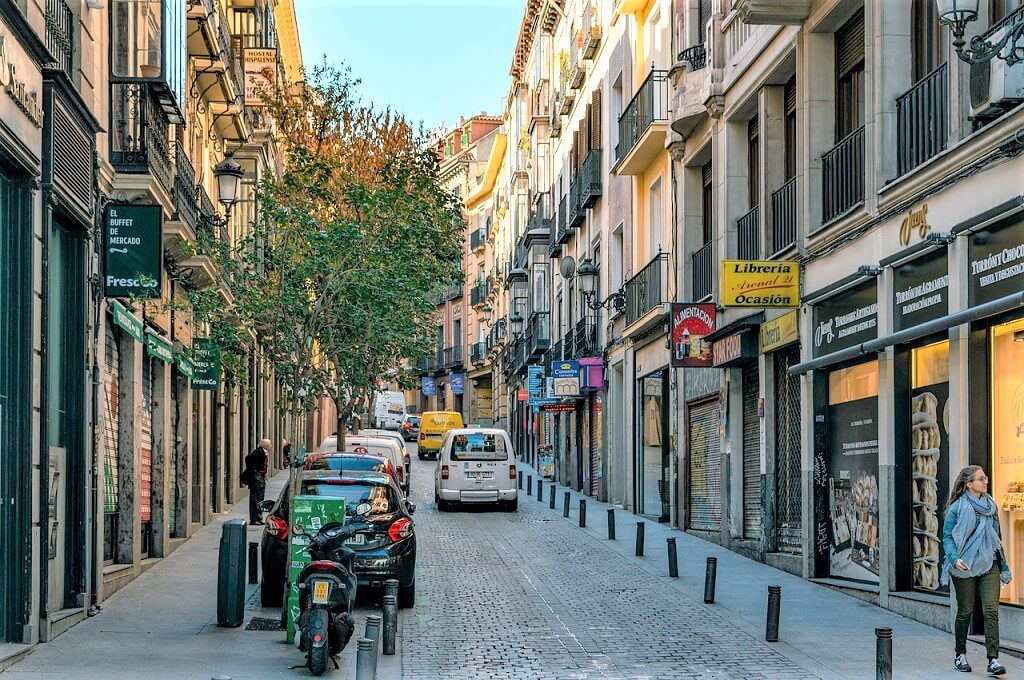
Lavapies is a bit on the rough side and has managed to avoid gentrification over the years. But that’s one of the things that makes it interesting.
Parque El Retiro
Finally, for the ultimate in relaxation in the middle of a bustling capital city, head to Madrid’s equivalent of Central Park, the Parque El Retiro.
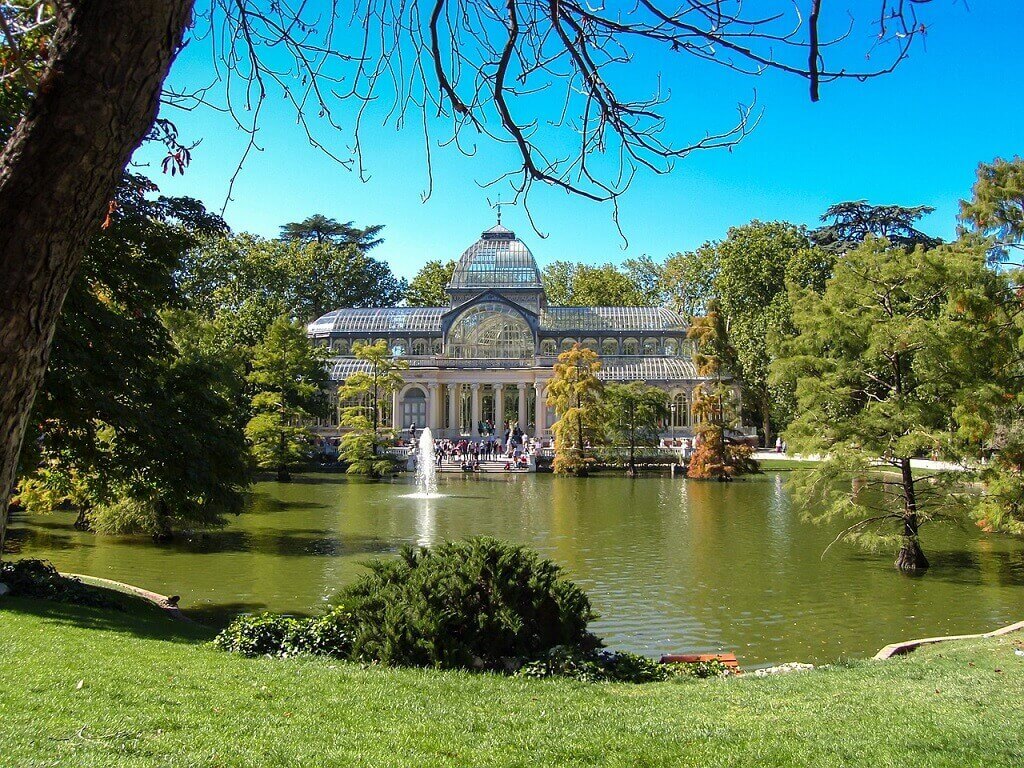
This bucolic park has over 300 acres of landscaped and wild vegetation, rose gardens, lakes and a magical crystal palace nestled among exotic trees and a reflecting pool. The effect is magical. El Retiro is a must-visit on your 2-days in Madrid.
Go to a local supermarket, grab some picnic ingredients and head to Parque El Retiro for a lovely picnic.
2-days in Madrid for the culture vulture. Madrid’s off-the-beaten-track museums
Museo de Las Descalzas
This Madrid-off-the-beaten-track offers unique, specialty museums like the Monasterio de las Descalzas Reales, a monastery in the center of Madrid dating from the 16th century.
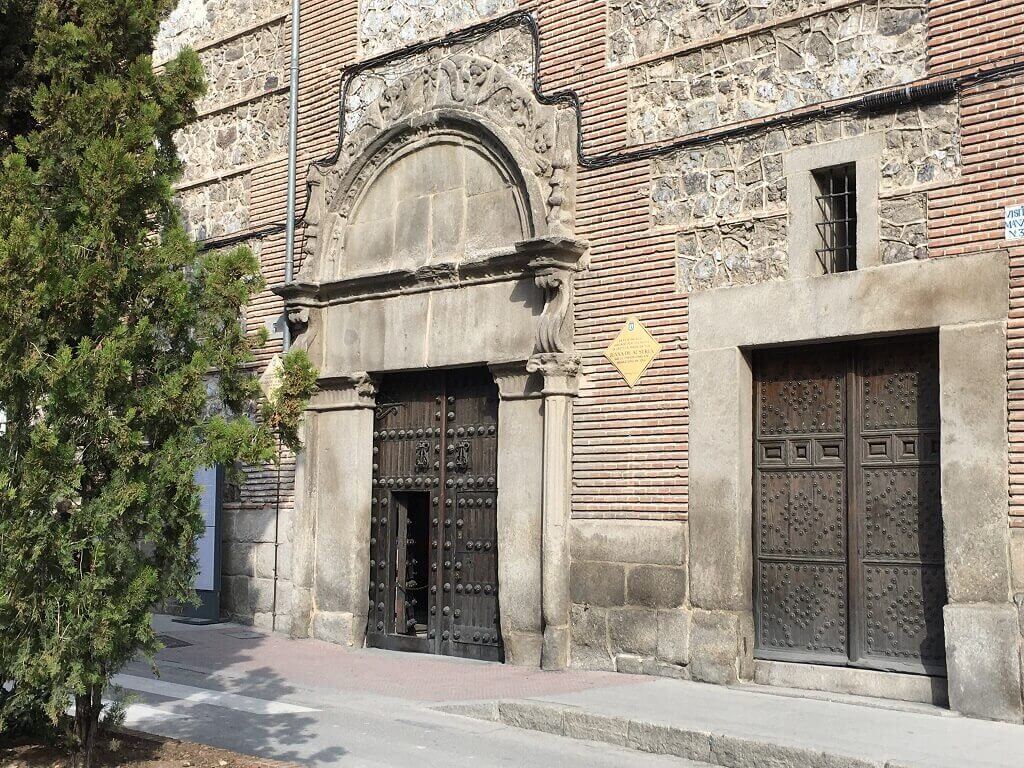
Today it is a museum well worth a visit. They have a beautiful art collection and the building itself is a work of art.
Sorolla Museum
Another often overlook museum is the Sorolla Museum featuring works by Spanish artist Joaquin Sorolla and his family in a lovely space that was once the artist’s home.
Museum of the History of Madrid
Housed in a former hospice for the poor, the Museum of the History of Madrid is a great place to learn about the history of the city.
Organized in chronological order, the museums illustrate Madrid’s history from its founding through the Civil War up until the present day.
A recent renovation ensured the displays are in both Spanish and English. Don’t miss the period maps or the Baroque design on the main door!
Cerralbo Museum
One of the most aggressively ornate and elaborately designed mansions I’ve ever seen is the Cerralbo Museum in the Arguelles neighborhood near Chueca.
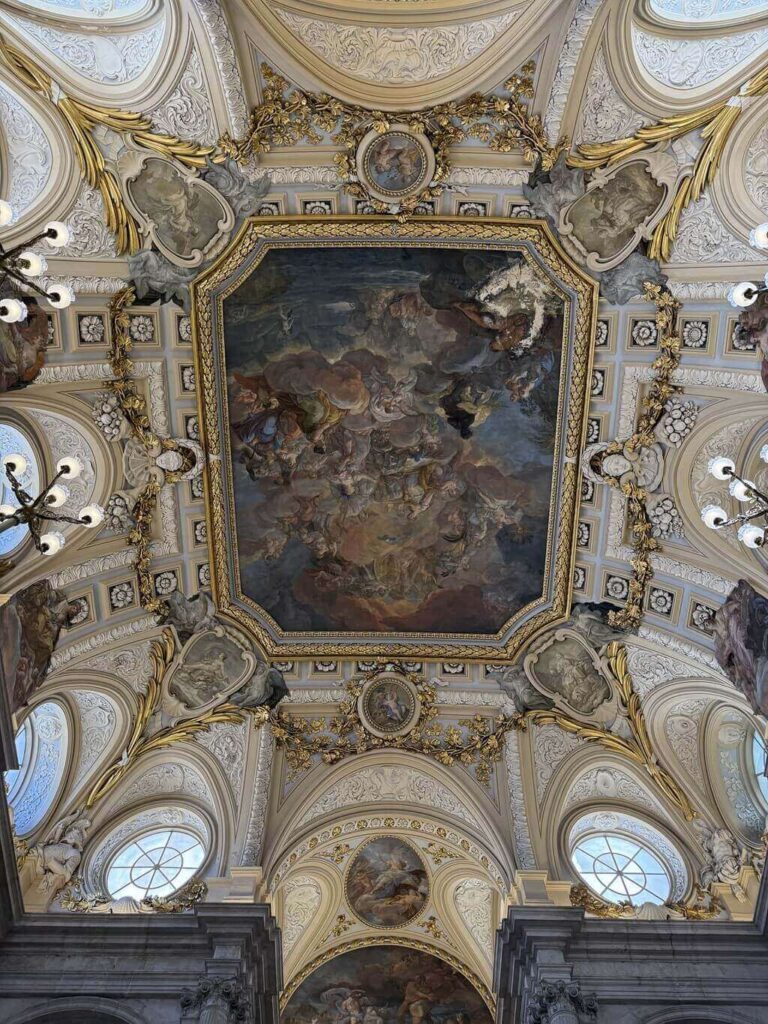
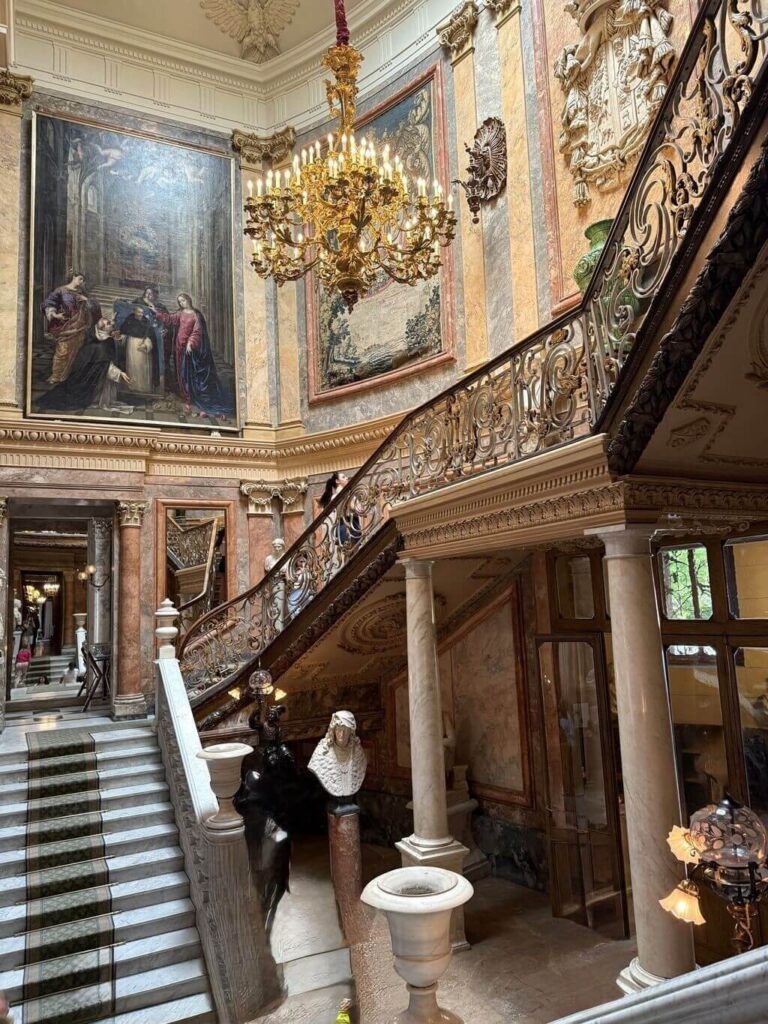
This is the former home of the Marques de Cerralbo, a Spanish aristocrat. The building was designed in Rococo and Baroque styles and was intended as a museum as well as a private home.
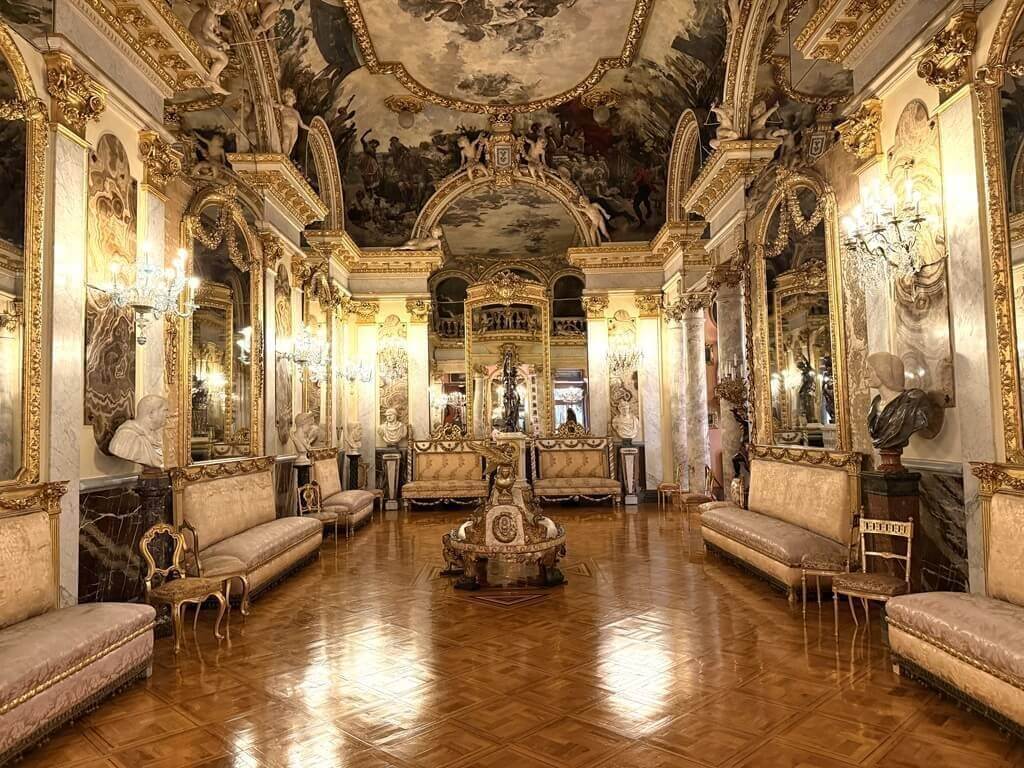
Above are some of the most ornate rooms in the Cerralbo Museum. The museum is packed with over 50,000 art objects in period rooms and has a lovely landscaped garden.
Museum of the History of the Americas
If you are interested in the history of the Americas from the Spanish perspective, don’t miss the Museo de Las Americas.
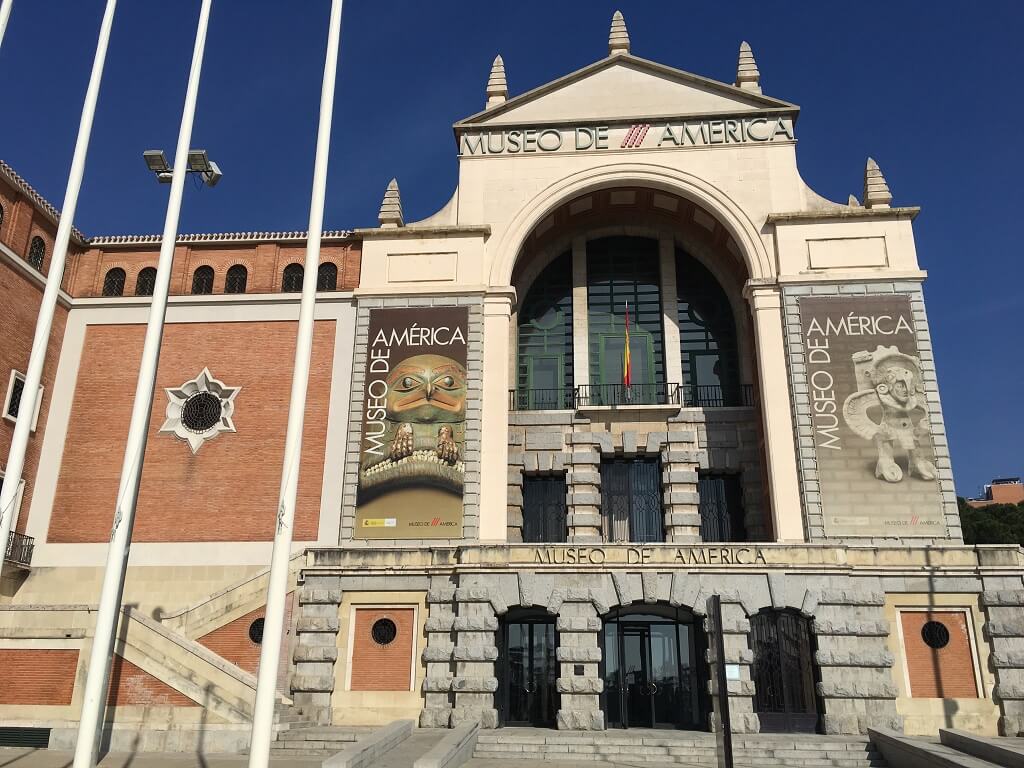
Museo Arqueologico Nacional
Not necessarily off-the-beaten-track but not one of the “Big Three” Madrid museums, the Museo Arqueológico Nacional (National Archeological Museum) is well worth your time.
Situated in the Salamanca neighborhood close to Parque El Retiro, this excellent museum has one of my favorite works of art, La Dama de Elche, a bust of a highly-decorated noble woman created around 430 BCE.
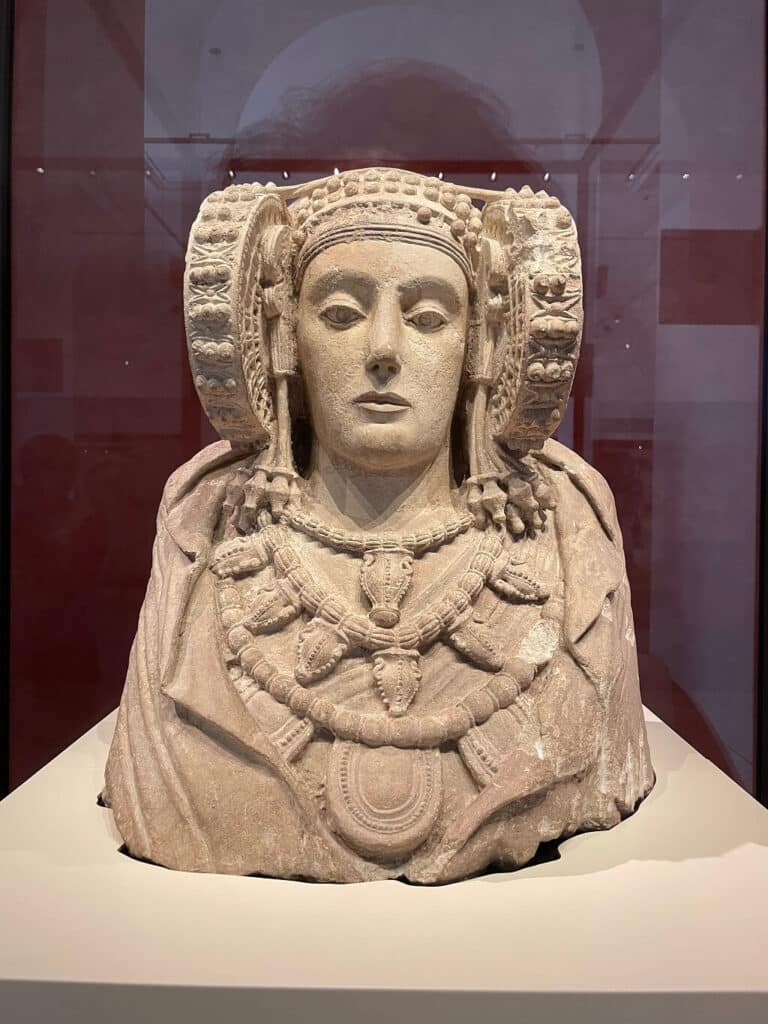
The Palacio Gaviria
The Palacio de Gaviria has big name temporary exhibits – think Brueghel – displayed in the former home of Spanish nobility.
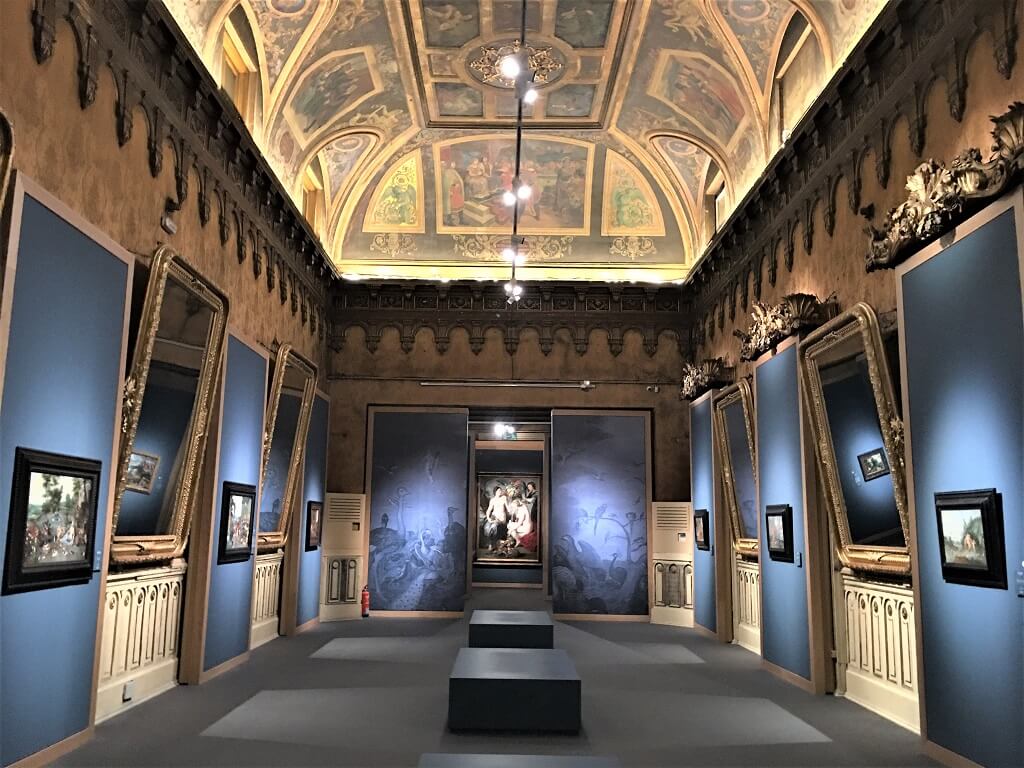
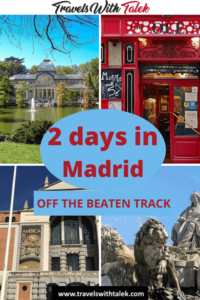
Where to eat in Madrid on your 2-days in Madrid culinary adventure
Food in Spain is almost a religion. The Spanish savor their meals and make time to enjoy them. Sometimes it seems every other doorway is a restaurant. Most have to be good because they simply wouldn’t survive otherwise.
Spain has many regional dishes. Madrid’s culinary claims to fame include “callos Madrileños” Madrid’s regional dish par excellence. This is tripe cooked in a savory sauce.
Another specialty is churros, long deep-fried dough accompanied by a hot chocolate drink. This is pure melted dark chocolate. The combination is delicious especially for breakfast on a chilly Madrid morning.
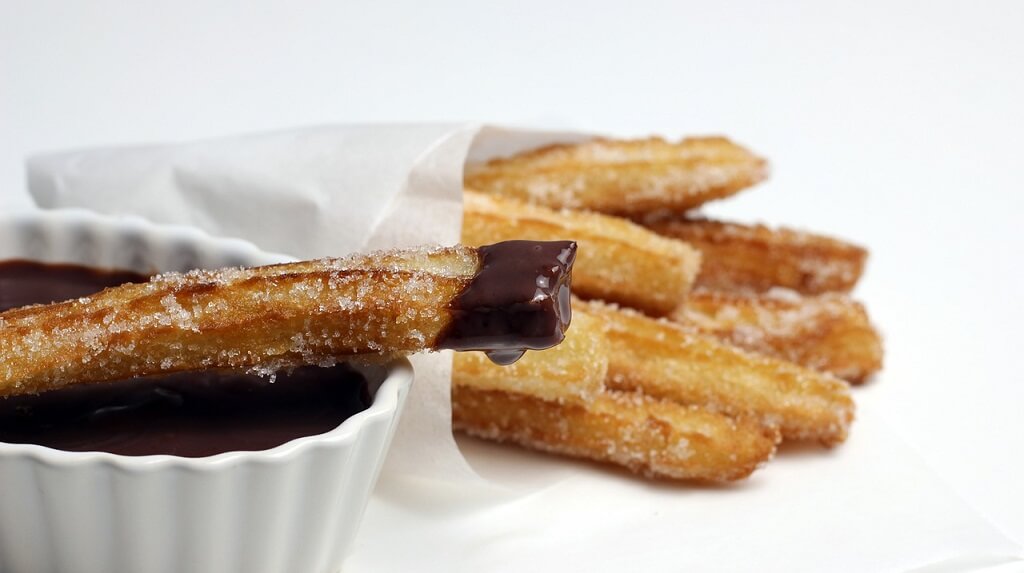
Besides those restaurants mentioned above, here are a few of my favorites. Indulge in the Madrid food experience during your 2 days in Madrid.
If you want to experience the Spanish tapas culture, head to neighborhood bars that specialize in the tasty Spanish tidbits.
One such gem close to the Prado Museum is Cerveceria Cervantes. This is one of the best tapas restaurants in Madrid and I always try to make time to go there.
Cafe Valera. Located in the Sol neighborhood, this place is just heavenly.
Specializing in dishes from Galicia in Spain’s northwest corner, this is the quintessential sedate, white-tablecloth restaurant with dark-suited waiters wearing long white aprons making great menu recommendations…but without the accompanying price tag.
Grab yourself a window seat and wrap yourself in this little oasis of Old World European charm and civility as you enjoy classic Galician dishes and watch the world go by
As in many cities, restaurants tend to congregate in a particular area or street. Ibiza Street on the east side of Parque El Retiro is one such street. Ibiza street hosts a string of restaurants at least half a mile long.
You’ll find cuisines from Japan, Peru, China, Greece, the Basque region and more.
A couple of restaurants that are sure to please on Ibiza Street are KultO (the capital O is not a typo) and La Cocina del Frente. These restaurants are all good, offer different types of food and come in different price ranges. You’re sure to find something ideal.
Another street that has developed into a foodie wonderland is Ponzano Street. This street has dozens of fabulous restaurants on either side, some with Michelin stars.
Keep in mind that Spaniards eat late; lunch after 2 pm and dinner after 8 pm. So, don’t show up for lunch at 12 pm (like I did) because there won’t be anyone there.
Museo del Jamon. Iberian ham is a big thing in Spain. There is a chain of stores called Museo del Jamon (Ham Museum) selling just about every type of ham imaginable. Some stores also have sit-down restaurants and/or counters.
It’s a great place to grab a quick sandwich and a cold beer.
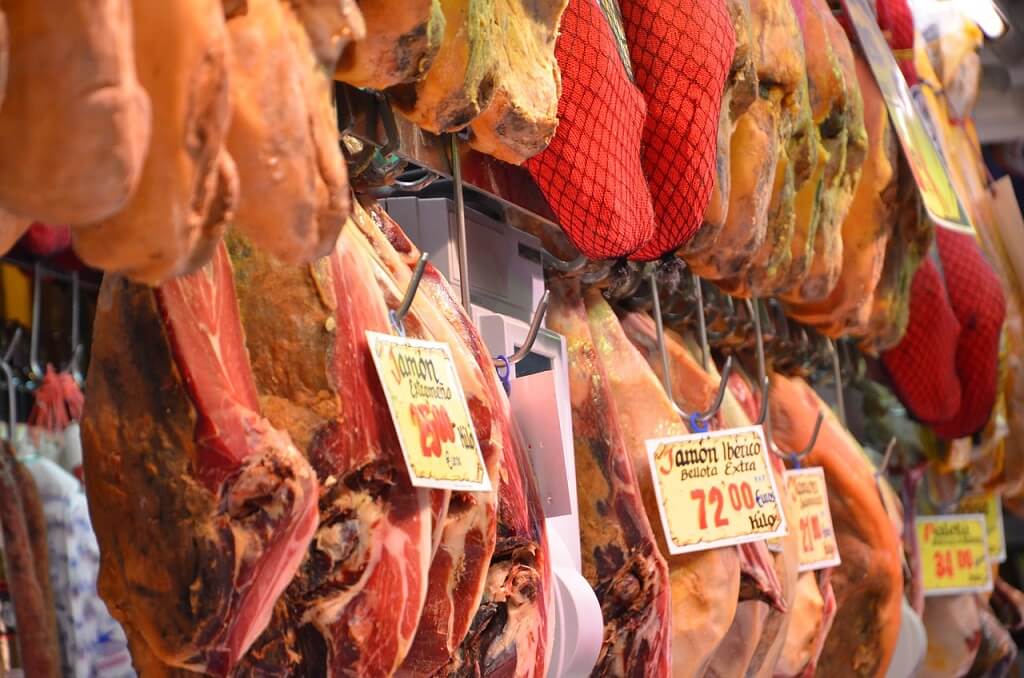
Jorge Juan Street in the Salamanca neighborhood is a street with wonderful restaurants on both sides of the street. You’ll have a hard time deciding which to patronize.
The restaurants in Salamanca can be a bit pricy but worth it for a good splurge. Some include La Maquina Jorge Juan, a traditional grill, Amazonico Restaurant for pan-Asian fare and El Paraguas, for dishes from Asturias in the north of Spain, another one of the country’s gastronomic wonderlands.
A wonderful Spanish tradition is eating at the local markets. Some of the classics are Mercado San Miguel, Mercado San Anton and Mercado La Paz mentioned above, but any little street market is bound to have adjacent tasty restaurants and cafes.
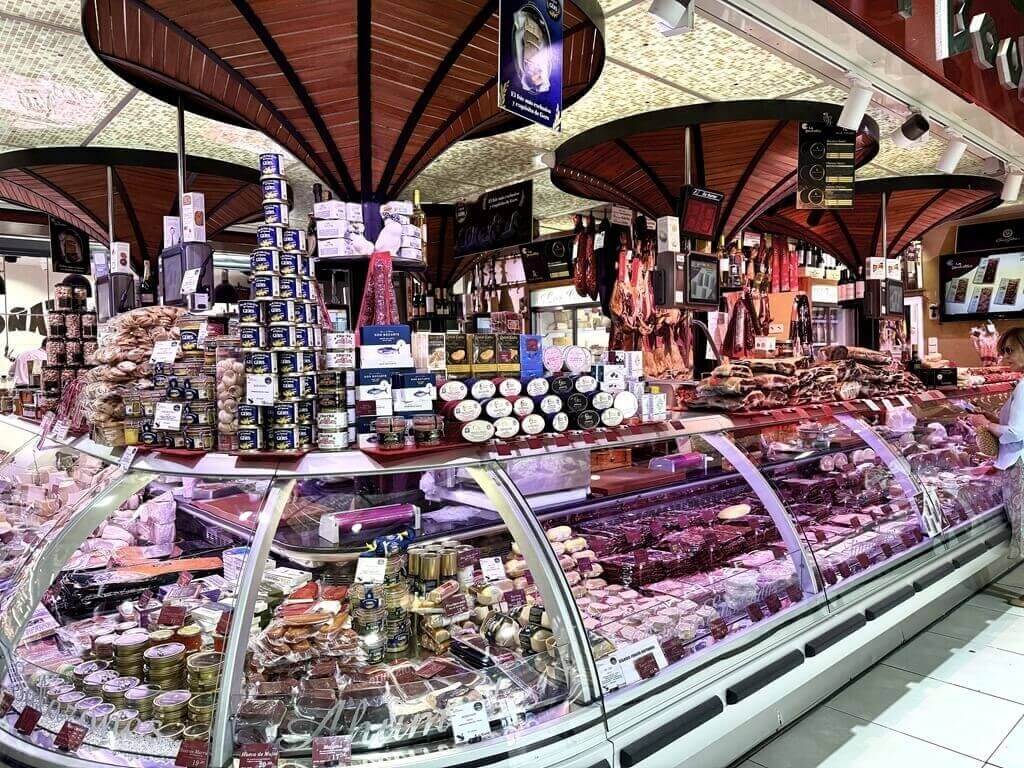
Good food is not just for humans in Spain. Here is an ad I found in the upscale neighborhood of Salamanca advertising a high-end dog food. Two top, white-robed chefs, with serious looks on their faces, discuss dog nutrition over an array of delicious looking food.
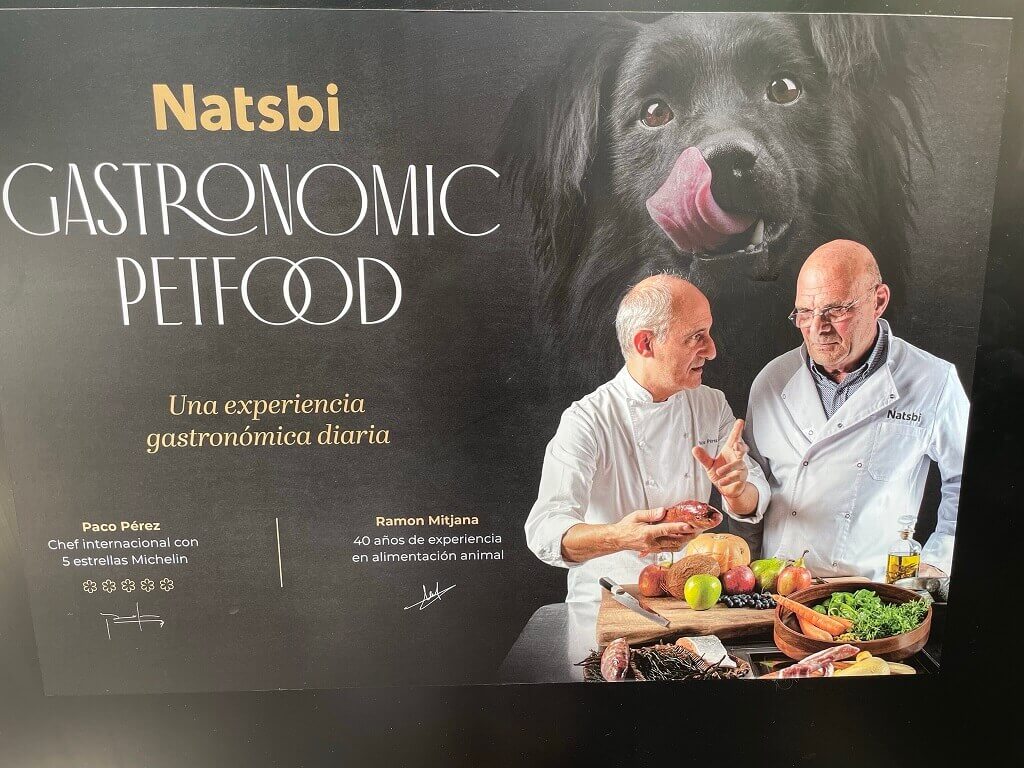
How to get around Madrid
From the airport to Madrid
There are many options to get from the airport to the city center such as different buses, the metro/subway and taxi. There are clearly marked signs at the airport directing you to the metro. Take line 8 (pink color) from the airport into the city.
Metered taxi’s can be hailed from just about anywhere or found at taxi stops.
Madrid’s metro/subway system
It’s easy to maximize your 2 days in Madrid with the local metro. Navigating Madrid via metro is easy and cheap. There are tourist passes available as well as 10-ride options, perfect for short stays. Download your Madrid metro map here.
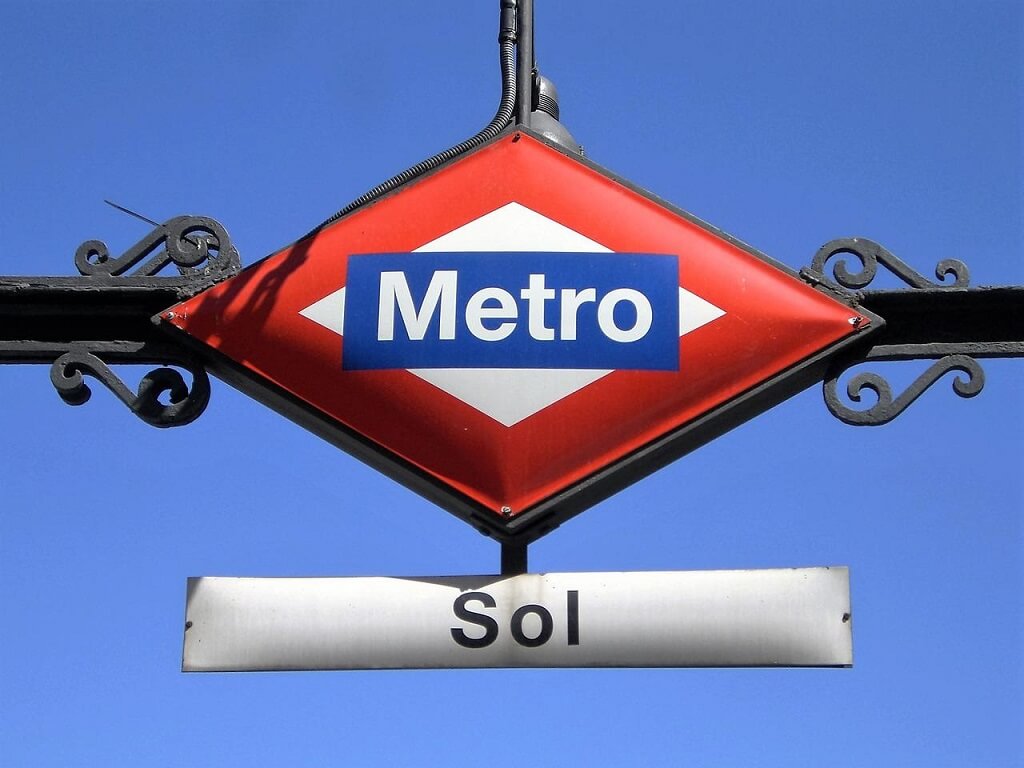
Other transportation options
Apps like Uber and Cabify are available and useful to get around Madrid. The bus system is also useful, especially if you download the EMT bus app, but I find the metro system to be very efficient.
Madrid’s railway station
Madrid’s main railroad station is Atocha in the southeast of the city. The station is easily accessible on metro line 8. You can travel anywhere in Spain and beyond from this station.
You can buy tickets online at RENFE, the national rail service or on omio.com.
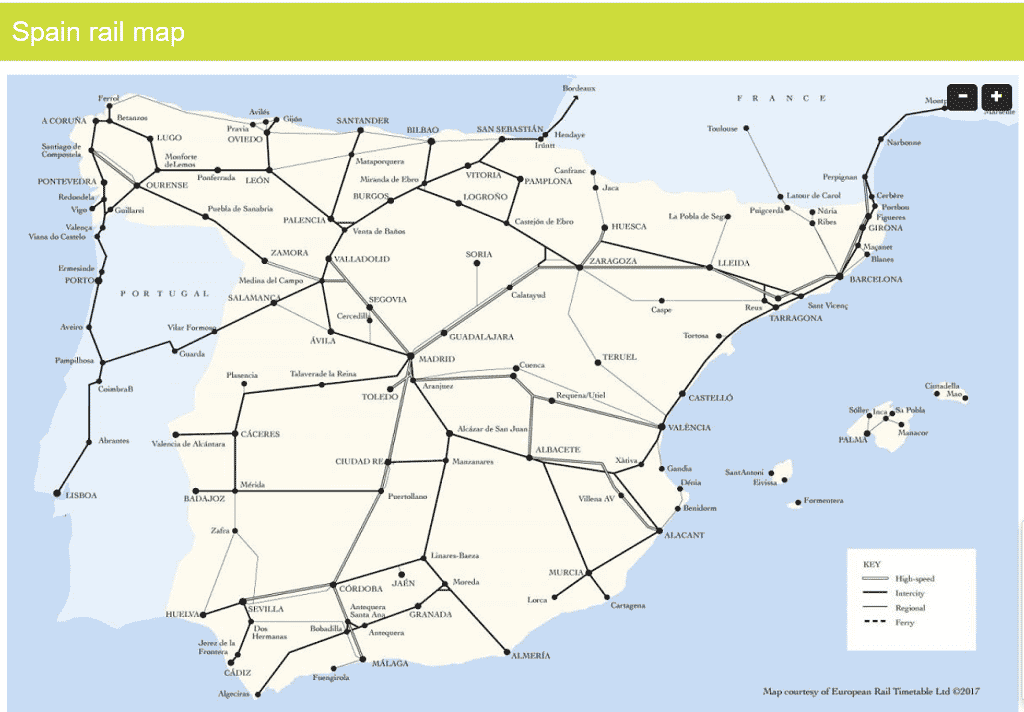
Where to stay in Madrid
A higher-end hotel centrally located on the Gran Via, one of Madrid’s busiest and most beautiful avenues is the Hyatt Gran Via.
Looking for a mid-level hotel in a good location close to transportation and many attractions? Try the Hotel Madrid Gran Via.
For budget hotels and hostels, check out these accommodations.
Day trips from Madrid
If you have more than 2 days in Madrid, head over to these wonderful towns each of which is about one hour from Madrid by car or train.
Segovia
Segovia is a World Heritage city with unique and iconic sights like the Roman aqueduct, the Jewish quarter and the cathedral.
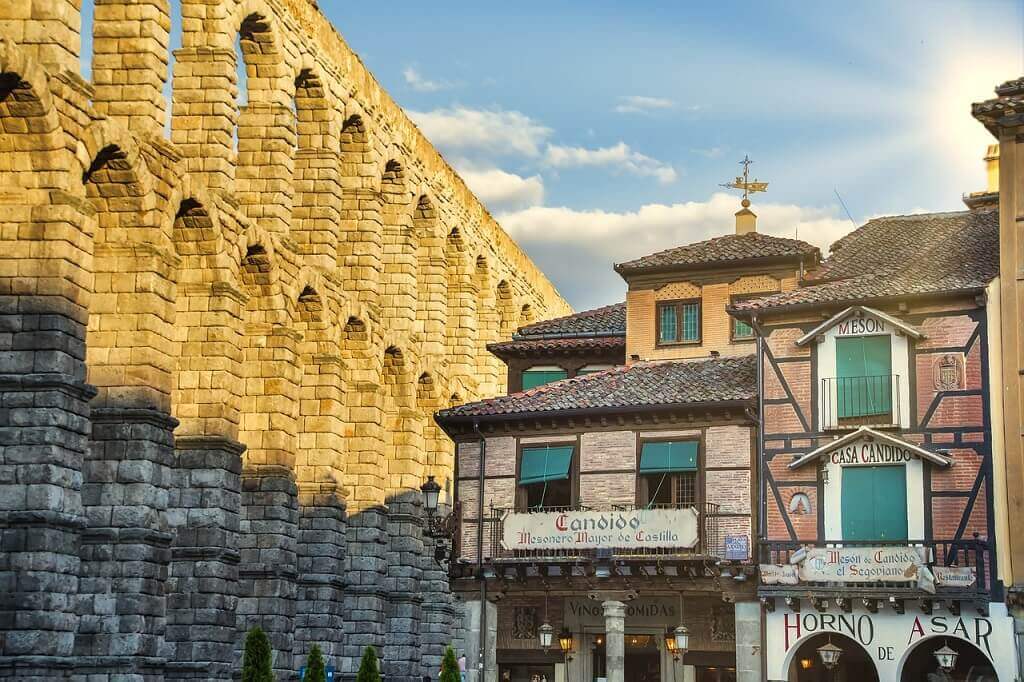
Don’t leave Segovia without enjoying a meal at Meson de Candido where you can sample roast suckling pig, rabbit, pheasant and other game in the Spanish tradition, right next to the ancient Roman aqueduct.
Toledo
Toledo‘s claims to fame are many but the Alcazar fortress is the star. Also worth your time is the old Synagogue and the Jewish quarter. The view from the fortress is just spectacular. Famous for its artisanal crafts including metalwork, Toledo is also a World Heritage City.
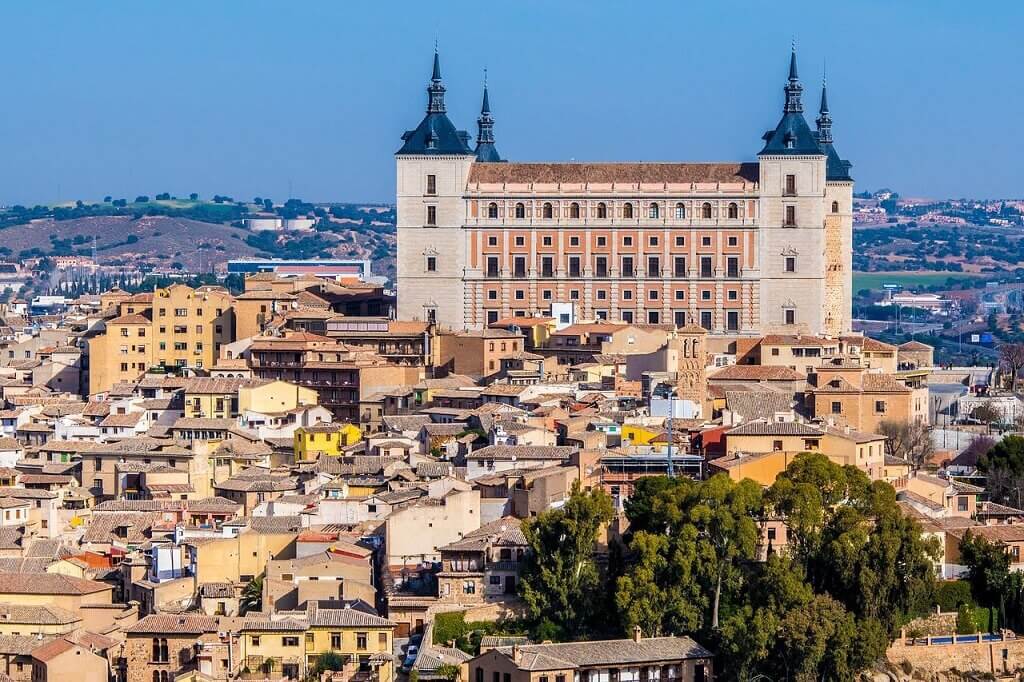
Toledo was the home of the famous painter El Greco and his works can be seen all over the city in churches and convents.
Avila
Avila, a World Heritage city, is famous for its Medieval walls that surround the entire city. It is also the birthplace of one of Christianity’s most revered saints, Saint Theresa of Avila. Another famous resident was the chief Inquisitor of Spain, Tomas de Torquemada who died in the city in 1398.
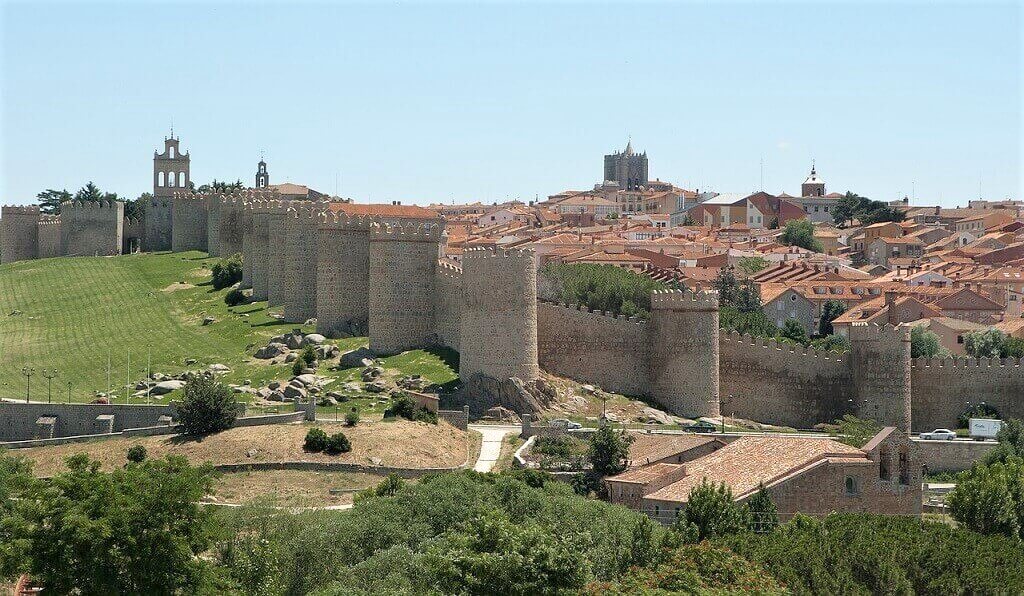
Don’t forget to try the famous “yemas” little pastries in the shape of eggs sold by the nuns and available all over the city.
10 Madrid fun facts
At about 670 meters (2200 feet) above sea level, it’s the highest capital city in Europe.
It has more cloudless days than almost any other European city.
Madrid is one of the greenest cities in Europe.
It was designated one of the European capitals of culture in 1992 due to its vast array of cultural venues.
Madrileños, a person from Madrid, wake late, have lunch late – certainly after 1PM, have dinner late – 9PM-ish, and go to sleep late.
A person from Madrid is called a “gato” or (cat).
It is the second largest city in the EU, after Berlin.
According to FIFA, Madrid’s own Real Madrid FC is the most successful soccer/football club in the 20th century.
The Royal Palace has 4,418 rooms, but the royal family doesn’t live there!

Madrid has an annual Flamenco Festival as well as a Gay Pride Parade.
Good to know
Many restaurants are open only during mealtimes. Mealtimes are unusually late in Madrid. Check opening hours before you arrive.
Likewise with museums. Different museums are closed on different days. Check opening hours so you won’t be disappointed.
Many places of business are closed between 2 to 4PM and stay open later in the evenings, sometimes till 9 or 10PM.
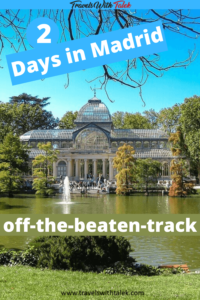
What are your thoughts on this 2 days in Madrid itinerary?
Learn a bit about the history and culture of Madrid before you visit. These books will help you.

BTW, if you are getting ready for your trip, make sure to take advantage of these useful, money-saving links to book your trip:
- Research and book your flight with Skyscanner. I have found them to be the best because they list all airlines including the budget ones. You are always sure of having researched all options.
- For car rental around the world, Discover Cars has flexible pickup and drop-off options, I recommend Discover Cars.
- Book your accommodation with Booking.com. I find they have a wide selection and a nice, user-friendly, transparent website.
- Protect your trip and, more importantly, protect yourself with travel insurance. I use Travelinsurance.com and have been very happy with them.
- For more general tours to any destination or attraction, book with Viator. Check them out.
- Need a visa? Get your visa for all countries with Passport Visa Express.
- Looking for a cool walking tour to explore a city? My favorite walking tours are offered by Take Walks.
- Food and drink tours are the best way to enjoy a city. And Devour Tours are my favorite.
- Looking for a good VPN to protect your security, privacy and freedom online while traveling? Nordvpn is your best option.
- The best and most economical way to stay connected while traveling is with an Airalo eSIM.
I personally use, and can recommend, all the companies listed here and elsewhere on my blog. By booking through these sites, the small commission we earn – at no cost to you – helps us maintain this site so we can continue to offer our readers valuable travel tips and advice.























2 Responses
Excellent guide to Madrid. Happy you mentioned calle de Ibiza, also called Bulbiza (as in boulevard de Ibiza) where my second home is. World famous chef Jose Andres partnered with five restauranteurs there to open some of the best eateries there. KultO is one of my favorite restaurants there, at the west end of Ibiza next to parque del Retiro. La Cocina de Frente has one of the best Cocido Madrileños.
I would also recommend a day trip to the Sierra de Guadarrama for great hikes and spectacular views.
Brilliant tips as usual! You should get credit for lots of the Madrid post. Keep ’em coming.